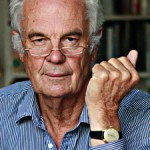Mohammad and the wild, marginal men of the Muslim world.
By Jonathan Power
The wild demonstrations that last week burst out in many places in the Middle East, Pakistan, Afghanistan, Sudan and other places will not be the last and neither were they the first to protest Western insults of the prophet Mohammad. Much more serious were the ones that erupted in 1988 following the publication of Salman Rushdie’s novel, “The Satanic Verses”, and seven years ago the protests and threats that followed the publication of satirical cartoons in a Danish paper, mocking Mohammad.
It took 10 years for the fuss to die down over Rushdie’s book and for the fatwa with an order to kill Rushdie issued by Iran’s supreme leader, Ayatollah Ruhollah Khomeini, to be sidelined. (However, Rushdie told the BBC yesterday that the climate of fear is such that his book would not be published today. He also pointed out that the respected British Channel 4 cancelled the transmission last week of a documentary on Islam following threats.) People still talk about the Danish cartoons.
Now one knows how to anger the Muslim angry brigade – just make a rough and ready inflammatory film, costing less than a hundred dollars, about Mohammad and upload it. It is not too far distant from the mob in Pakistan who recently protested the supposed desecration of the Koran by an 11 year old girl and pressured the authorities to arrest her and incarcerate her.
Anyone anywhere- even one person as in this case- can make a filmed fuss and because of U-tube and Google it may even be spotted and the word passed around the ultra-committed. They do and will about all sorts of causes, some good- spoofing Russian president, Vladimir Putin, or criticising President Barack Obama over Afghanistan. Some bad- undermining the truth about the Holocaust, supporting the Nazis or promoting child pornography. They are being made and will be made all over the place, not just in America. Some are made in the Islamic world. It is impossible in a free society to police all such films, although the attempt is made with child pornography and pro Nazi material.
In the pre-Arab Spring days when pro-American dictators were common (even Muammar Gaddafi ended up opening his doors to the West and giving up his nuclear weapons’ programme to US and UK oversight) the clampdown on these demonstrations would have been extremely rough. Now, seeking not to antagonize the demonstrators, the police- without army backing- have avoided heavy-handed tactics, which is all to the good. Long may this become the norm in the new Middle East.
Even though in Libya the protestors who burnt down the US consulate in Benghazi also managed to murder the American ambassador the numbers involved were very modest. Compare them with the numbers who joined the anti-Gaddafi resistance. It has been the same all over parts of the Middle East, in Sudan, Afghanistan and Pakistan. In Lebanon the leader of Hezbollah is leading demonstrations this week but he politely waited until the Pope had finished his visit and has insisted that the protests be non-violent. In Iran, the country that took the lead over Rushdie, there have been only non-violent demonstrations with only 400 or so people attending.
Some see the hand of Al Qaeda among these protests, especially in Libya. Of course an Al Qaeda sympathizer or cell will have attached themselves to such protests but they have been marginal.
A better way to understand these violent would-be trouble makers would be to compare them with football hooligans. They are 0.1% of the revolutionaries who during the Arab Spring overthrew their dictatorial governments.
Unfortunately violence gets the attention of the media. In Egypt for one week some of the media, including the BBC, focussed on less than a hundred stone throwers during the time of the mass non-violent demonstrations as if they represented anyone but themselves. The media, especially television, have too often blown up the strength of the violent elements at the expense of the non-violent ones. In Syria’s case where non-violent demonstrators got the uprising off the ground the TV publicity accorded the then few violent ones helped shunt the non-violent protestors aside.
Some Americans, in particular presidential contender, Mitt Romney, (who seemed to have his foot in his mouth) tried to criticise the way President Obama reacted to the protests. In fact he dealt with these fast moving events as well as anyone could have expected. He was calm and said the right things at the right time. The US police have tracked down the culprit who insists on his right to free speech. It is not allowed even in America where free speech is a constitutional right to cry “fire” in a crowded theatre. The courts may have to decide on this fine line. These days the world is a theatre.
Copyright: Jonathan Power
